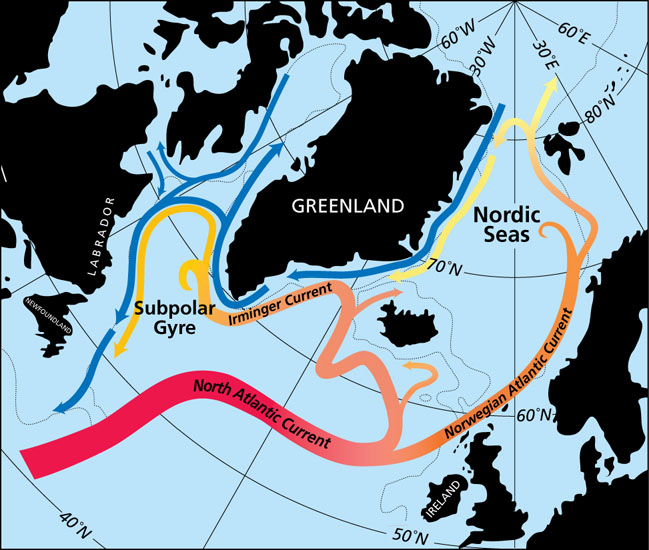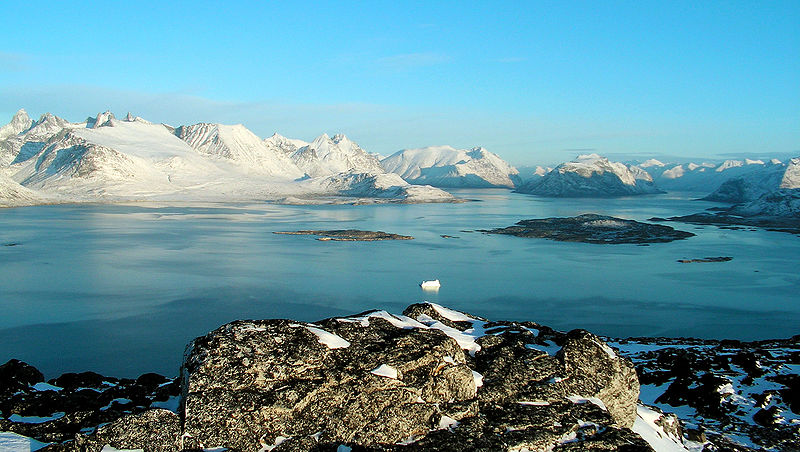
Graphic by Jack Cook, courtesy Woods Hole Oceanographic Institution
Subtropical waters are reaching Greenland’s glaciers, driving melting and likely triggering an acceleration of ice loss. It’s the first time researchers have seen such warm waters in any Greenland fjord.
Warming air temperatures, combined with warming sea temperatures, attack glaciers from both above and below, hastening their demise. Greenland’s ice sheet—two miles thick and the size of Mexico—has lost mass at an accelerated rate over the last decade, doubling its contribution to sea level rise.
Oceanographer Fiamma Straneo, tells the Woods Hole Oceanographic Institution:
“Among the mechanisms that we suspected might be triggering this acceleration [of glacial melt] are recent changes in ocean circulation in the North Atlantic, which are delivering larger amounts of subtropical waters to the high latitudes.”
Deep inside the Sermilik Fjord, researchers found subtropical water as warm as 39 degrees Fahrenheit (4 degrees Celsius). The team also analyzed data collected by 19 hooded seals tagged with satellite-linked temperature depth-recorders. The seals’ data revealed not only that shelf waters warm seasonally from July to December, but also that subtropical waters are now present on the shelf year round.
“This is the first extensive survey of one of these fjords that shows us how these warm waters circulate and how vigorous the circulation is,” says Straneo. “Changes in the large-scale ocean circulation of the North Atlantic are propagating to the glaciers very quickly—not in a matter of years, but a matter of months. It’s a very rapid communication.”
The study in Nature Geosciences highlights how little is known about ocean-glacier interactions—a connection not currently included in climate models.












